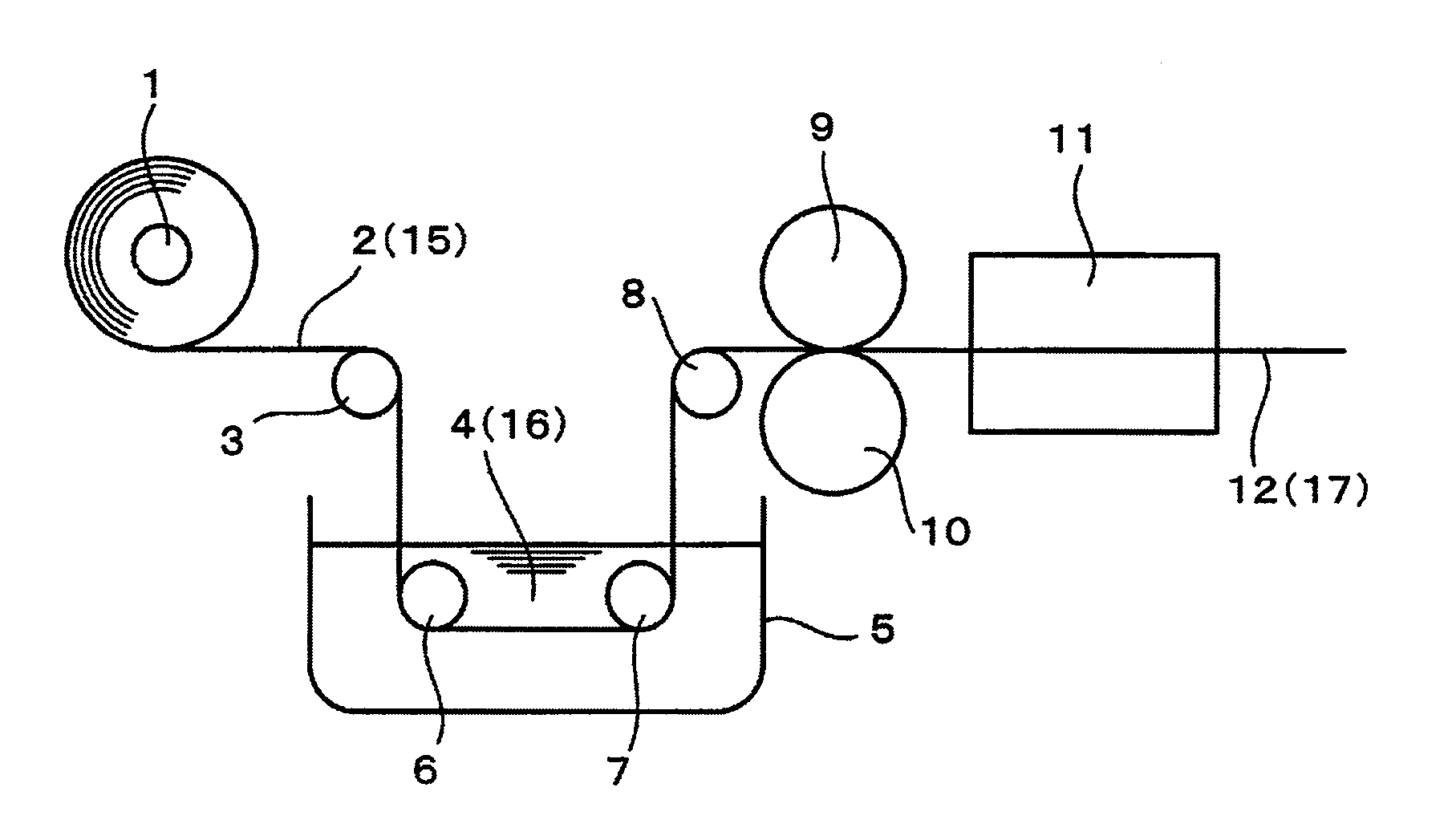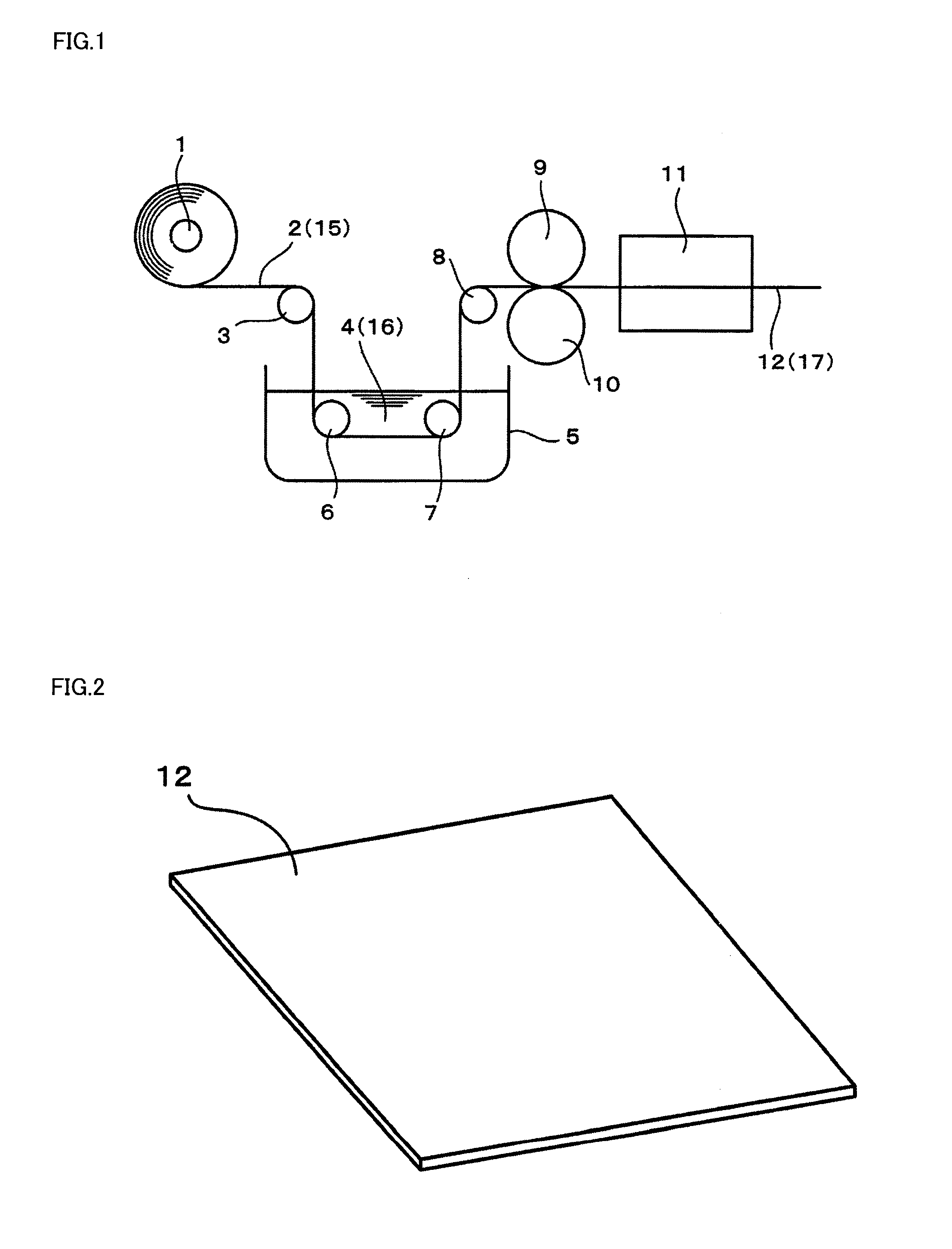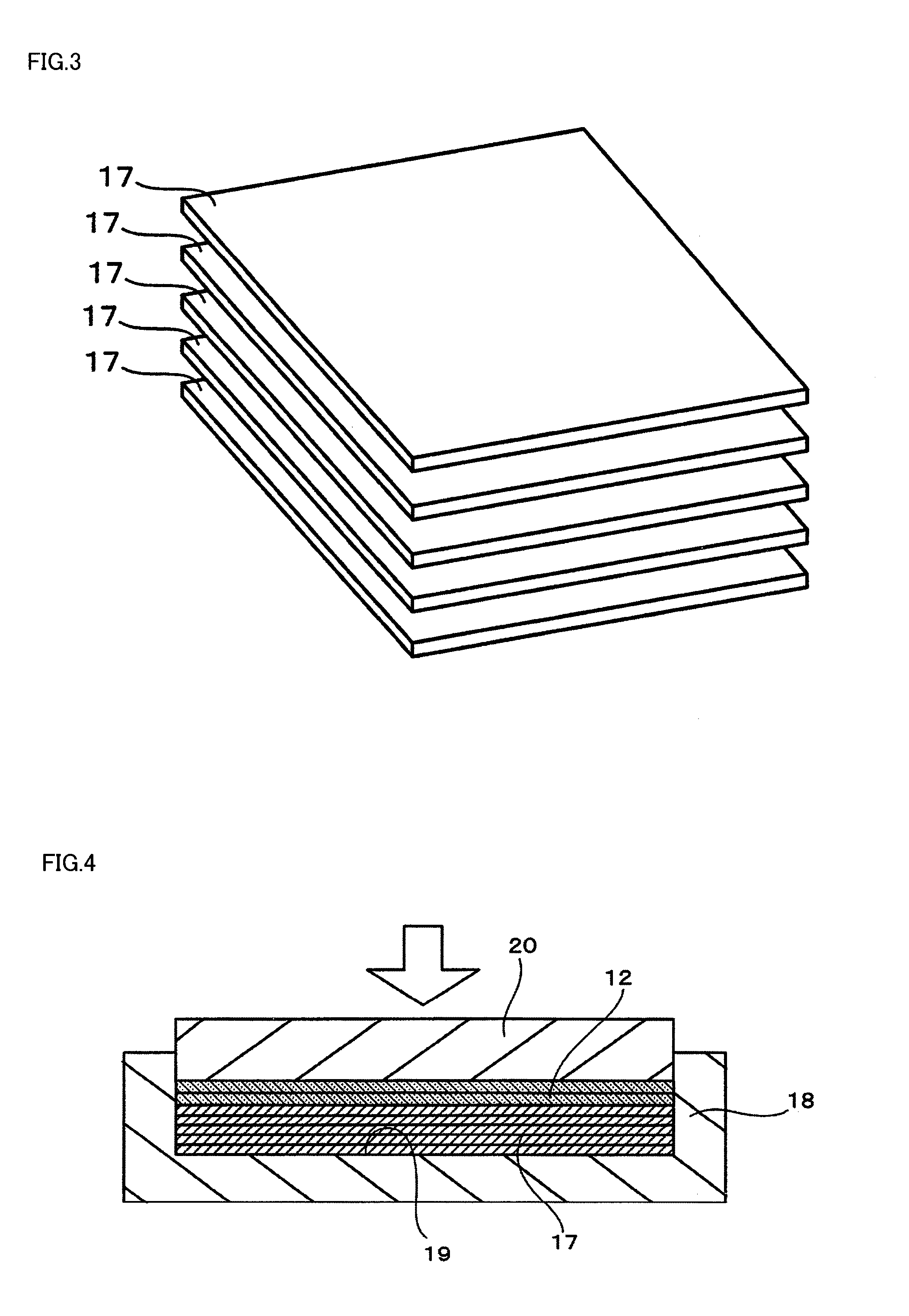Sliding contact surface-forming material, and multi-layered sliding contact component having the same
- Summary
- Abstract
- Description
- Claims
- Application Information
AI Technical Summary
Benefits of technology
Problems solved by technology
Method used
Image
Examples
example
[0082]The present invention will be detailed below referring to Examples. It is to be understood that the present invention is not limited to Examples below, without departing from the spirit thereof.
examples 1 to 3
(Reinforcing Base for Sliding Contact Surface-Forming Material)
[0083]A single twist yarn formed by left-twisting (Z-twisting) at 280 T / m of a 400-denier spun yarn spun from PTFE fiber used as the fluorine-containing resin fiber, and a single twist yarn formed by left-twisting (Z-twisting) at 280 T / m of a No. 30-cotton-count spun yarn spun from polyester fiber, were prepared. One each of the single twist yarns were paralleled, and these two single twist yarns were twisted at 275 T / m in the direction (S-direction) opposite to the direction (Z-direction) in which the single twist yarns were spun, to form a ply yarn. Using the ply yarn as the warp (vertical yarn) and the weft (horizontal yarn), a flat-woven fabric having a density of 40 picks / inch for the horizontal yarn, and 40 ends / inch for the vertical yarn was produced. The flat-woven fabric was used later as a reinforcing base for the sliding contact surface-forming material.
(Resol-Type Phenolic Resin)
[0084]Into a separable flask e...
examples 4 to 6
(Reinforcing Base for Configuring Sliding Contact Surface-Forming Material)
[0092]Single twist yarns formed by left-twisting (Z-twisting) at 300 T / m of 400-denir spun yarn spun respectively from FEP fiber (Example 4), PFA fiber (Example 5), and ETFE fiber (Example 6) as the fluorine-containing resin fiber, and a single twist yarn formed by left-twisting (Z-twisting) at 300 T / m of polyester fiber of No. 30 cotton count, were prepared. One each of the single twist yarns were paralleled, and then twisted (S-twisting) at 295 T / m in the direction (S-direction) opposite to the direction (Z-direction) in which the single twist yarns were spun, to form a ply yarn. Using the ply yarn as the warp (vertical yarn) and the weft (horizontal yarn), a flat-woven fabric having a density of 40 picks / inch for the horizontal yarn, and 40 ends / inch for the vertical yarn was produced. The flat-woven fabric was used later as a reinforcing base 2 for configuring the sliding contact surface-forming material....
PUM
| Property | Measurement | Unit |
|---|---|---|
| Linear density | aaaaa | aaaaa |
| Percent by mass | aaaaa | aaaaa |
| Percent by mass | aaaaa | aaaaa |
Abstract
Description
Claims
Application Information
 Login to View More
Login to View More - R&D
- Intellectual Property
- Life Sciences
- Materials
- Tech Scout
- Unparalleled Data Quality
- Higher Quality Content
- 60% Fewer Hallucinations
Browse by: Latest US Patents, China's latest patents, Technical Efficacy Thesaurus, Application Domain, Technology Topic, Popular Technical Reports.
© 2025 PatSnap. All rights reserved.Legal|Privacy policy|Modern Slavery Act Transparency Statement|Sitemap|About US| Contact US: help@patsnap.com



